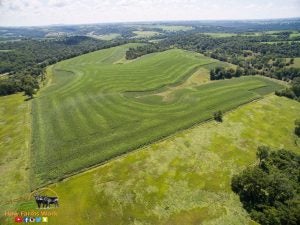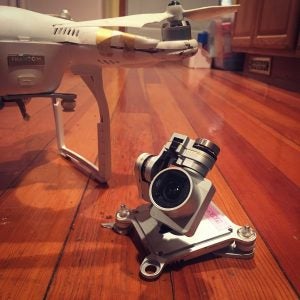Ten years ago, if you asked a farmer what the next technological breakthrough that they could add to their operation would be, not many would have said an Unmanned Aerial Vehicle (UAV). Yet a decade later, many farms are beginning to utilize a technology that wasn’t readily available just five years ago. Some people will picture a pesky neighbor kid nosediving a drone into their backyards like a miniature crop duster and ask what possible beneficial use this could serve other than to annoy their dogs.
Still, UAVs have found their way to an unexpected home — America’s farms. As the price for a UAV with a mounted camera continues to drop, more farmers are beginning to purchase a drone to assist in their operations. Before UAVs, most farmers only saw their farms from above through the lens of a film camera on a plane. In some areas, aerial photography services take yearly pictures of farms to sell prints to the owner. Now thanks to the Federal Aviation Administration’s new regulations pertaining the commercial uses of drones known as Part 107, the devices are now available for a variety of opportunities.
A wide range of benefits
With the advent of UAVs, farmers can now utilize drones to perform tasks such as aerial mapping of fields, monitoring crop health to identify problem areas, and with the help of an infrared camera, monitor photosynthesis across a field to assist the farmer in identifying what areas are worth watching. Adding a thermal camera will allow a farmer to identify cooler, more hydrated parts of a field as well as hot dry areas. By analyzing these problem areas, farmers can use soil tests to create a prescription to apply fertilizer at a variable rate or irrigate to create more consistent yields across the farm.
On larger ranches, drones could prove useful by helping a rancher track their cattle’s movements. Our drone has been a time-saver even for the number of cattle we have, as I’ve been able to locate our cattle through the thick brush in the pasture in minutes versus spending an hour walking through brush trying to find out where they are.
Problem in the outfield
In our experience this year, we identified an issue that we would not have been aware of if we hadn’t used a drone to check the field from the air. Using the photo below, we were able to contact our agronomist to discuss possible reasons why there was striping in this particular corn field, which we determined to be the result of a fertilizer application issue.

I cannot stress how vital a drone can be to a farm operation. Thanks to this image, we were able to recuperate thousands of dollars in lost yields due to an application issue — an issue we would not have been aware of until we pulled out of the fields wondering why it seemed this field didn’t yield as well as the rest. In the above image, the darker areas yielded about 40 bushels/acre higher than the lighter areas. I will be going more in-depth on our YouTube channel when I can sit down and analyze our yields in the coming weeks. A quick yield check I performed before we had begun to harvest showed a yield of just over 100 bushels/acre a few rows in from the field’s edge. This was very alarming when most of our farms yielded over 200 bushels/acre average.
Unfortunately, our drone suffered a compass/gyro error that caused it to crash while filming our latest episode of How Farms Work. While crashing a drone is not a matter of if — but when — I strongly feel that the benefits outweigh the costs and risks of using a drone. A drone can be worth it’s weight in gold when you need it. Proper maintenance and routine calibrations are important to help ensure your drone a safe flight, but there will always be extraordinary circumstances that will result in a crash. When your drone crashes, you’ll be forced to take the hit and move on, but luckily that’s in the job description of being a farmer.




